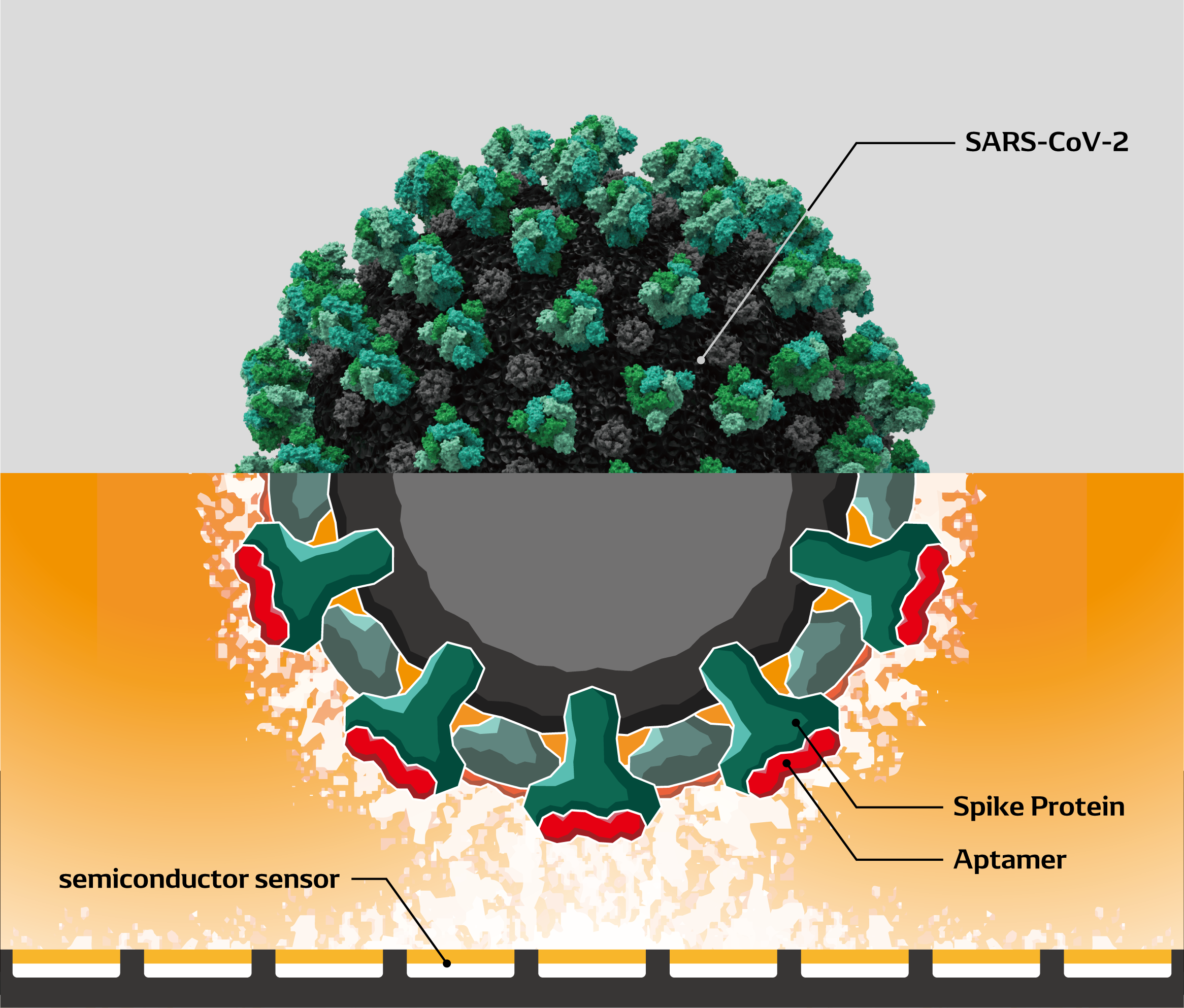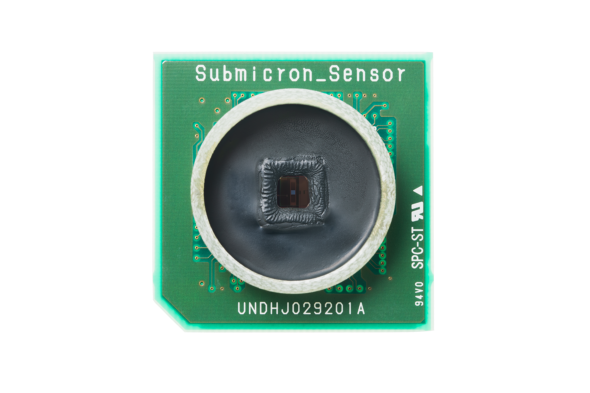

COVID-19: Virus detection with semiconductor sensor: PCR and antigen test
-Semiconductor sensor and artificial synthesis / nucleic acid molecule “aptamer”-
Denso
Tokai University,
Chubu University,
Toyohashi University of Technology
On October 21, it announced that it had succeeded in detecting the new coronavirus using a semiconductor sensor. Twice
This sensor can be used to detect viruses at the same level as PCR tests.
Aiming to realize a test as simple as an antigen test, we will accelerate development for practical use.
Japan Agency for Medical Research and Development (AMED):
Utilized semiconductor sensor technology by AMED.
-Peplomer on the surface of the virus that triggers infection-
With semiconductor sensors
With the artificially synthesized nucleic acid molecule “aptamer”
Detect a virus.
–ITmedia NEWS
https://www.itmedia.co.jp/news/articles/2110/21/news103.html
Denso: Detects 3 universities and new coronavirus
Developed a new mechanism of biosensor
PCR test and antigen test:
Currently, PCR tests and antigen tests are used for the diagnosis of new coronavirus.
However, in PCR tests and antigen tests,
Whether or not the detected virus is infectious, etc.
Virus infectivity cannot be assessed.PCR test
Although the virus detection sensitivity is high, the burden on medical staff such as pretreatment is large.Antigen test
While it is a simple inspection, there are problems such as variations in detection accuracy.How to detect virus infectivity
Peplomers on the surface of the virus,
With semiconductor sensors and aptamers (artificially synthesized nucleic acid molecules)
It is possible to detect.This time, we used this method for the first time in the world.
We succeeded in detecting the new coronavirus with high sensitivity.
Quantitative measurement of viral load:
The semiconductor sensor can quantitatively measure the amount of virus with an electric signal.
It can be used for grasping the infection status with high accuracy and confirming the effectiveness of treatment.
Toyohashi University of Technology:
We manufactured a semiconductor sensor that can convert the amount of virus into an electrical signal.
A rice grain-sized sensor that uses semiconductor technology.
Not just one virus
Even if the symptoms are very similar and difficult to distinguish
You will be able to distinguish with one inspection.
https://car.watch.impress.co.jp/docs/news/1360229.html
DENSO Develop Biosensor to Detect SARS-CoV-2 and Accelerate Development for practical application
Tokai University
Toyohashi University of Technology Chubu University
DENSO Corporationhave been developing testing equipment to detect SARS-CoV-2 with support from the Japan Agency for Medical Research and Development (AMED)*1.
Universities and DENSO
announced today that the group has succeeded in developing a biosensor based on a new mechanism and detecting SARS-CoV-2.
The group will accelerate the development toward practical application
to contribute to early diagnosis of infectious diseases, which is a key factor in limiting virus’ spread.
To prevent the medical system from being overwhelmed due to viral infectious diseases,
it is essential to prevent the spread of viruses by early diagnosis and isolation.
At present, PCR tests*2 and antigen tests*3 are used for the diagnosis of SARS-CoV-2.
However,
these tests cannot evaluate “virus infectivity,” which indicates the power of the detected virus to infect.PCR tests are characterized by its high virus detection sensitivity,
but effort of sample pretreatment process imposes a high workload on medical professionals.
Newsroom | News | DENSO Global Website
https://www.denso.com/global/en/news/newsroom/2021/20211021-g01/